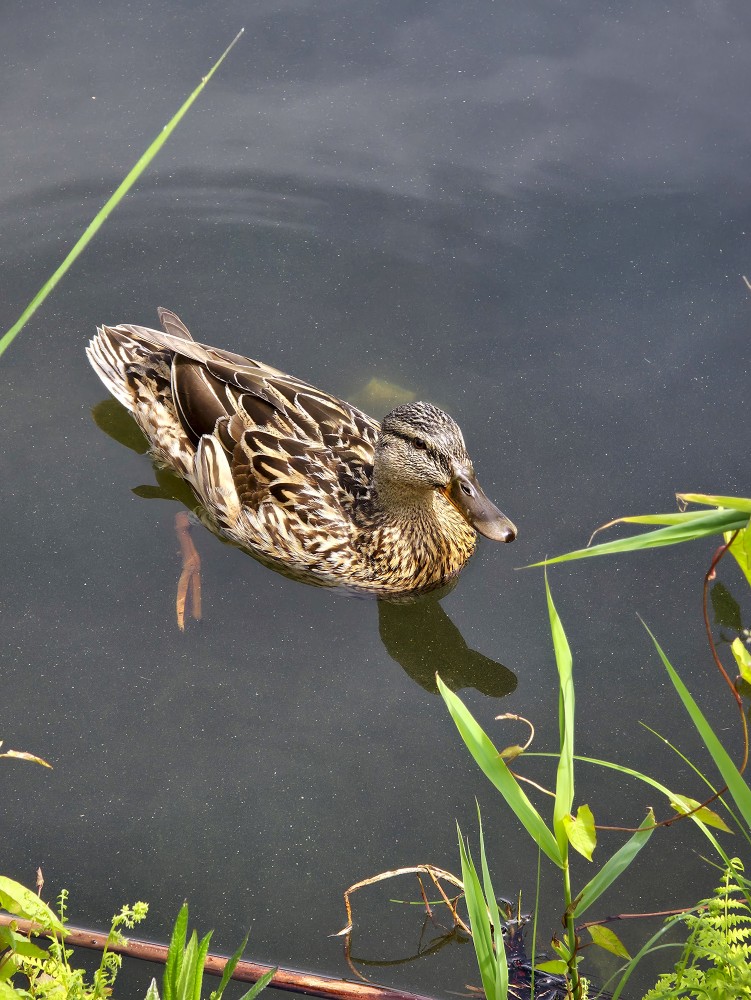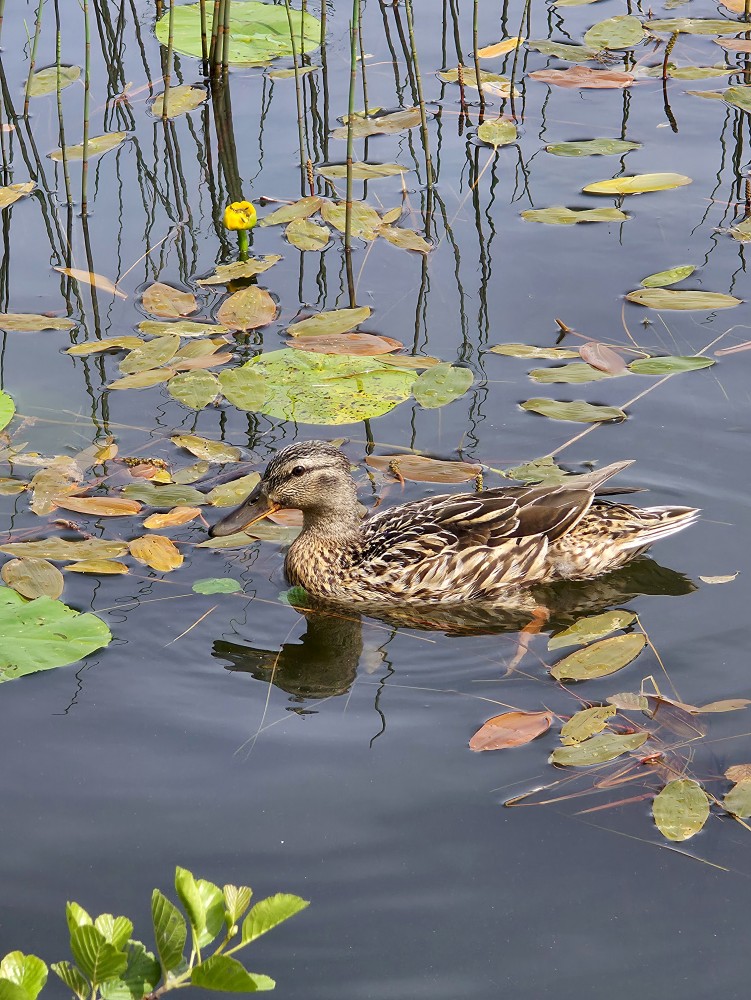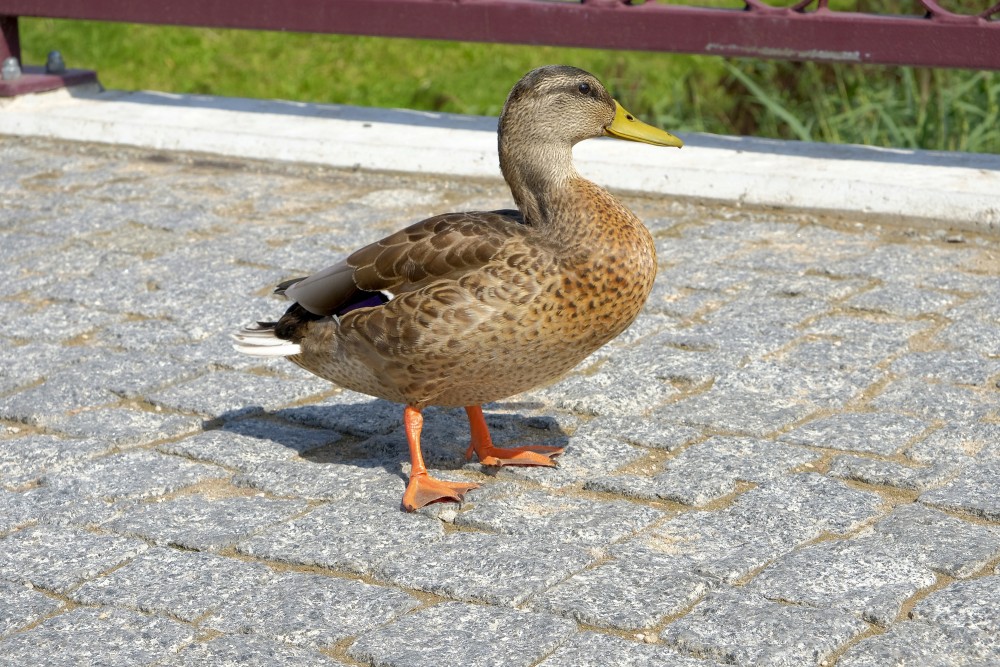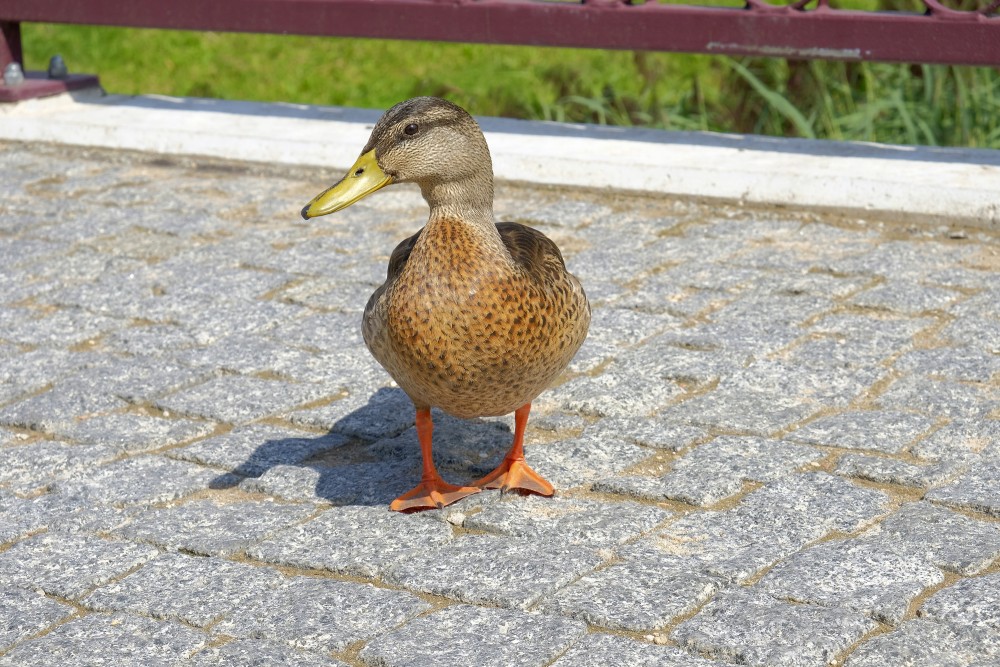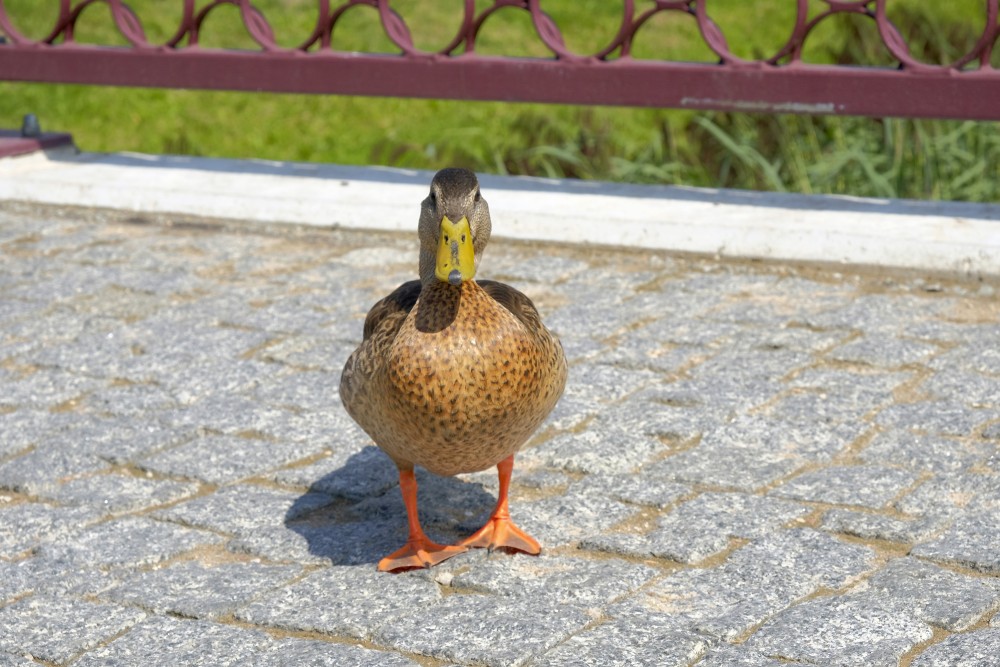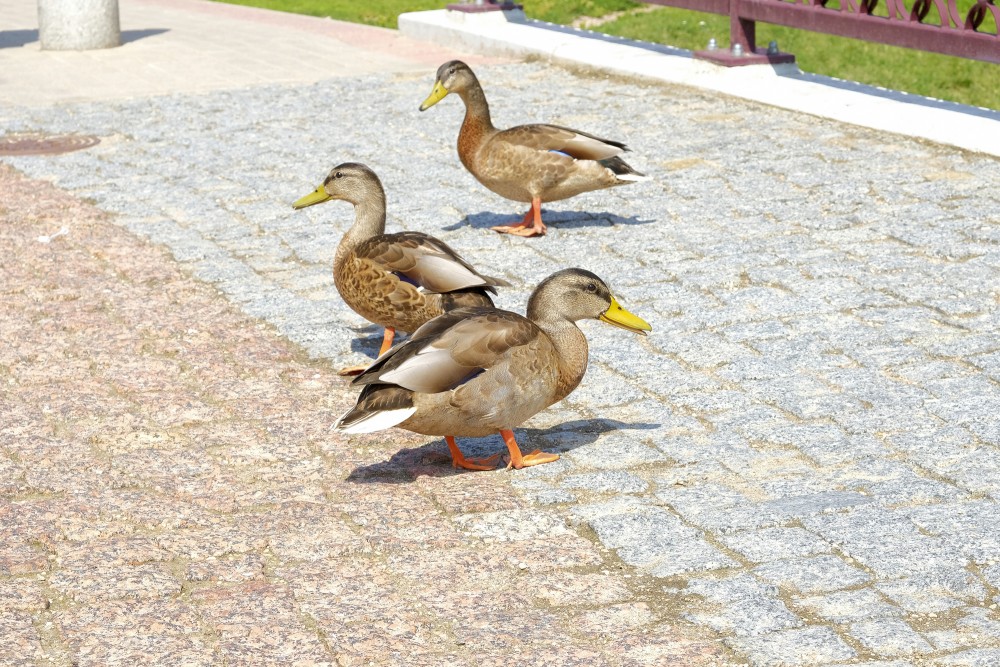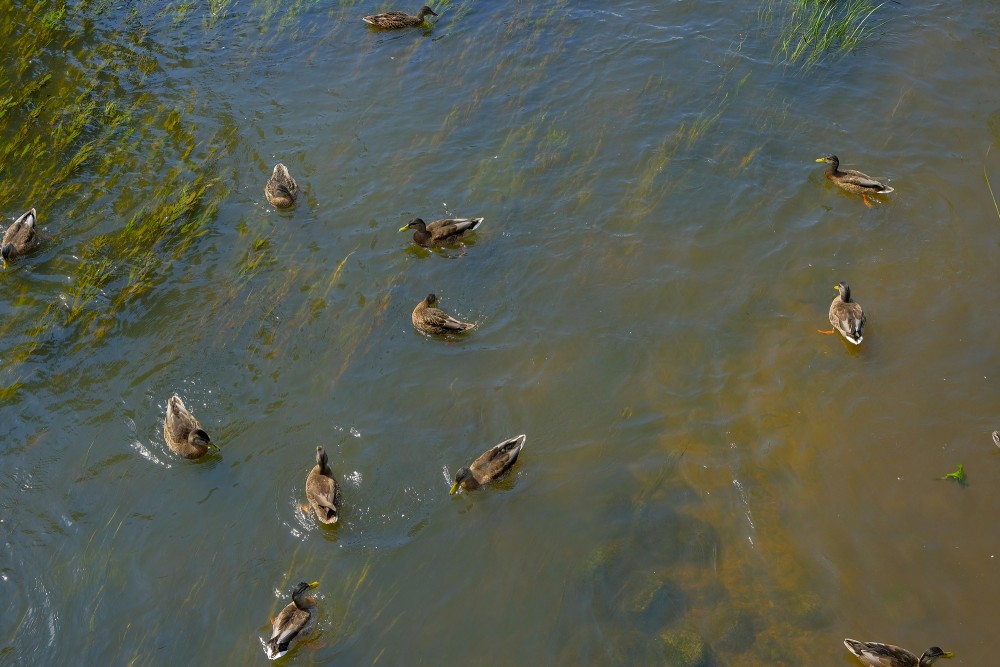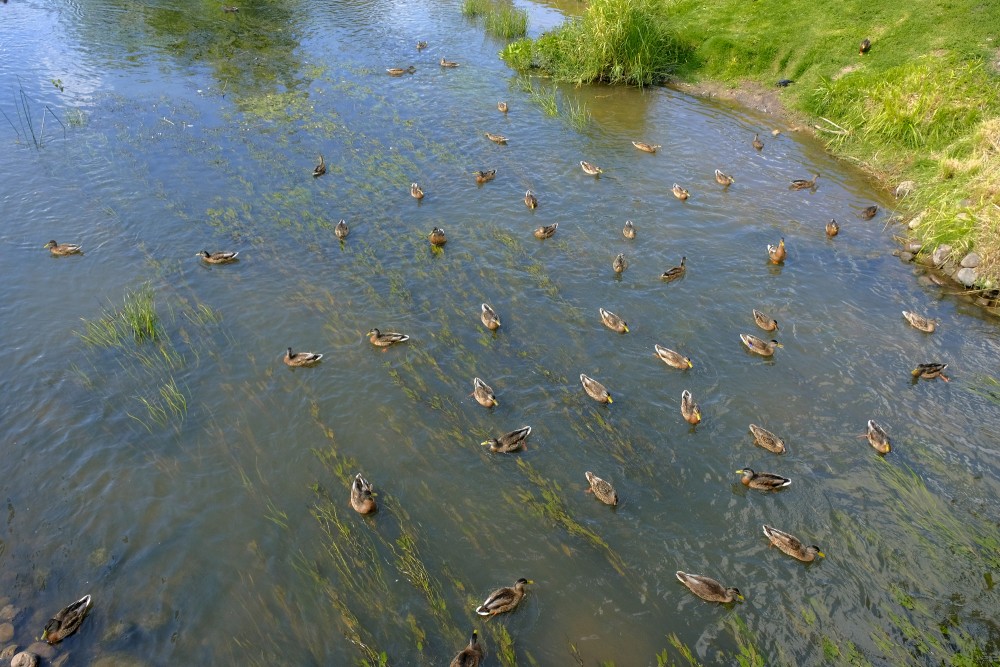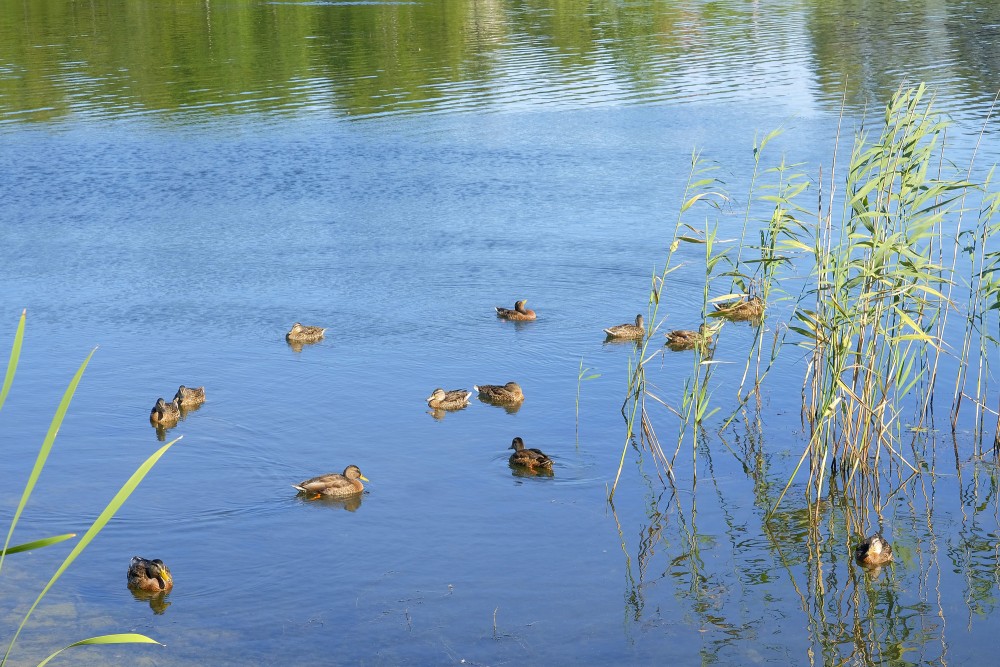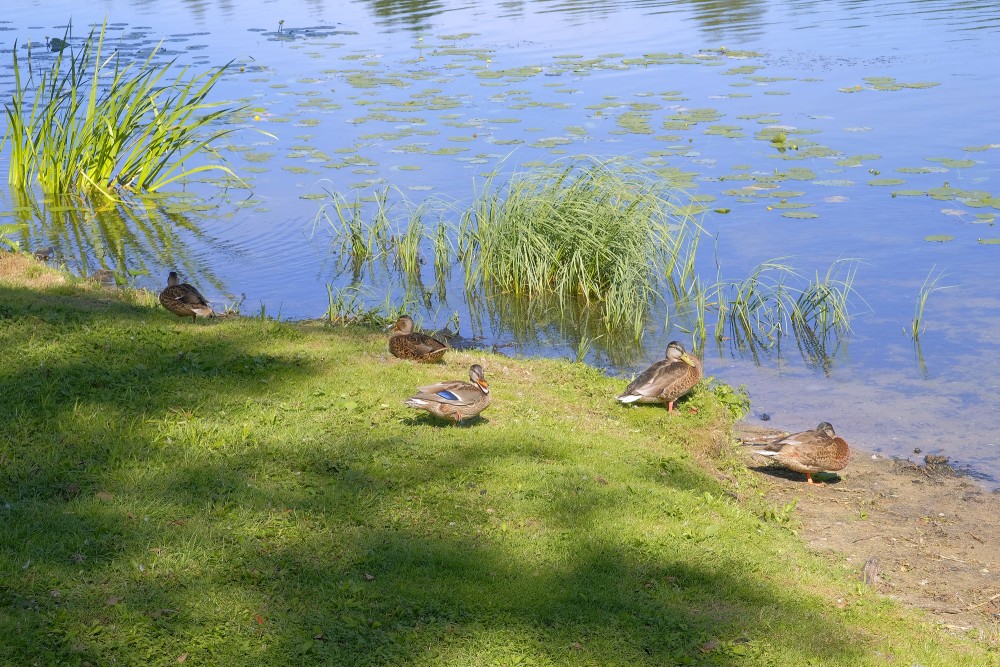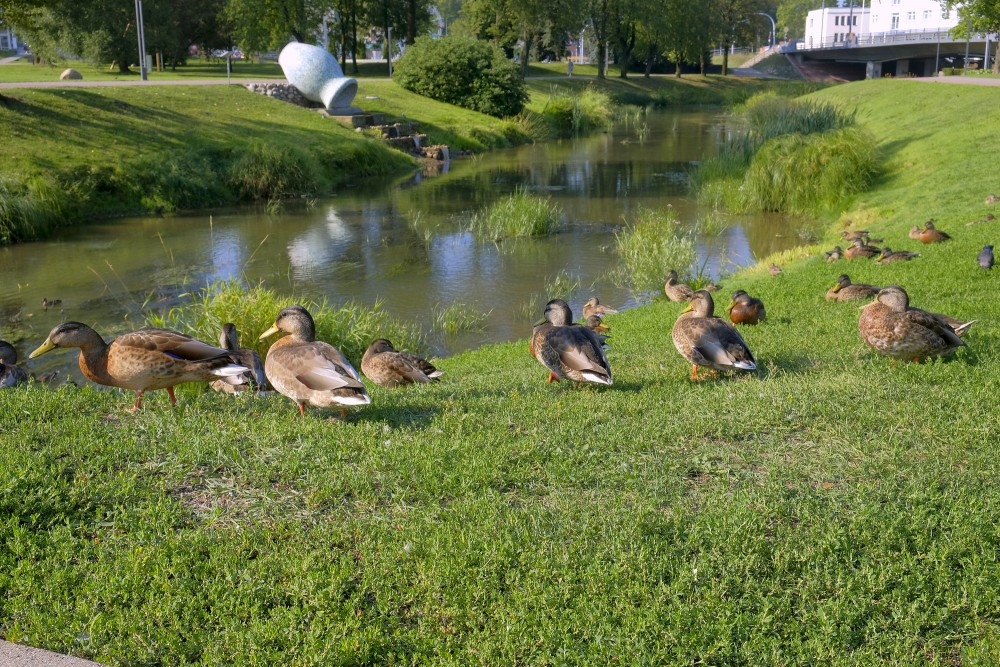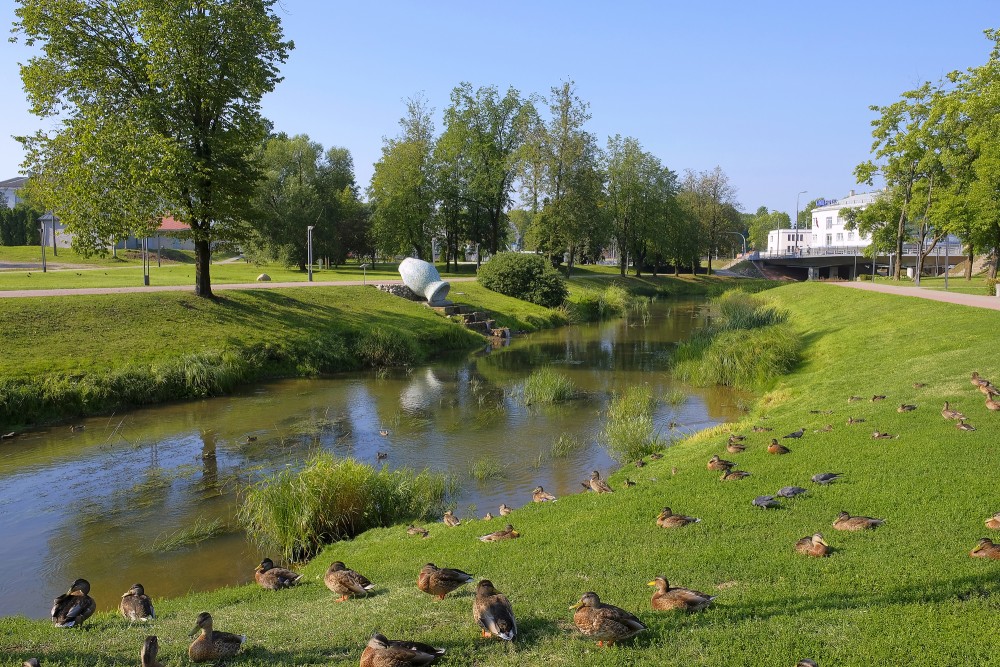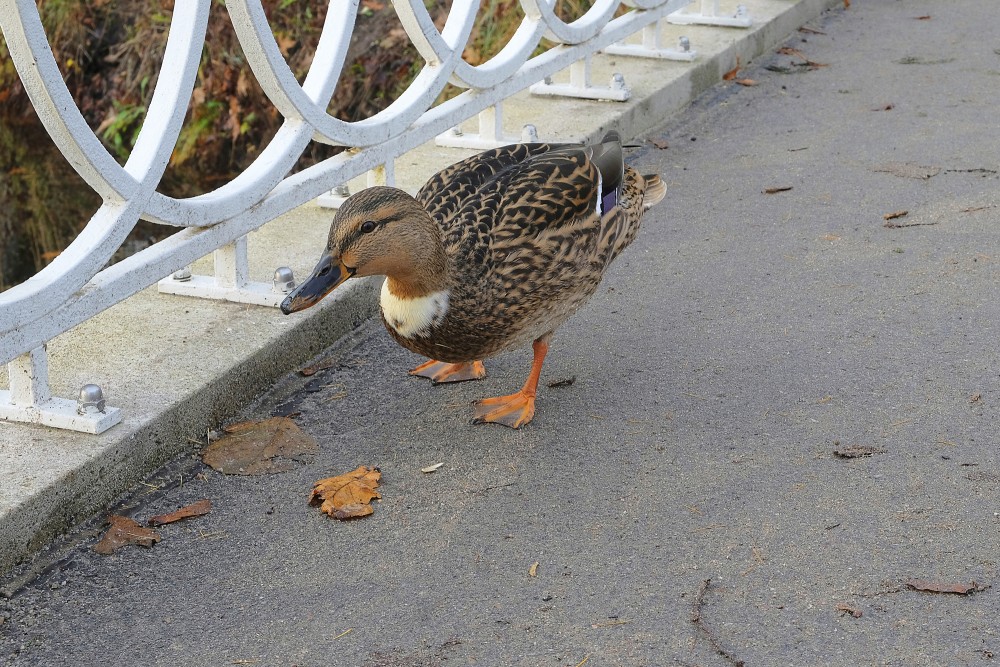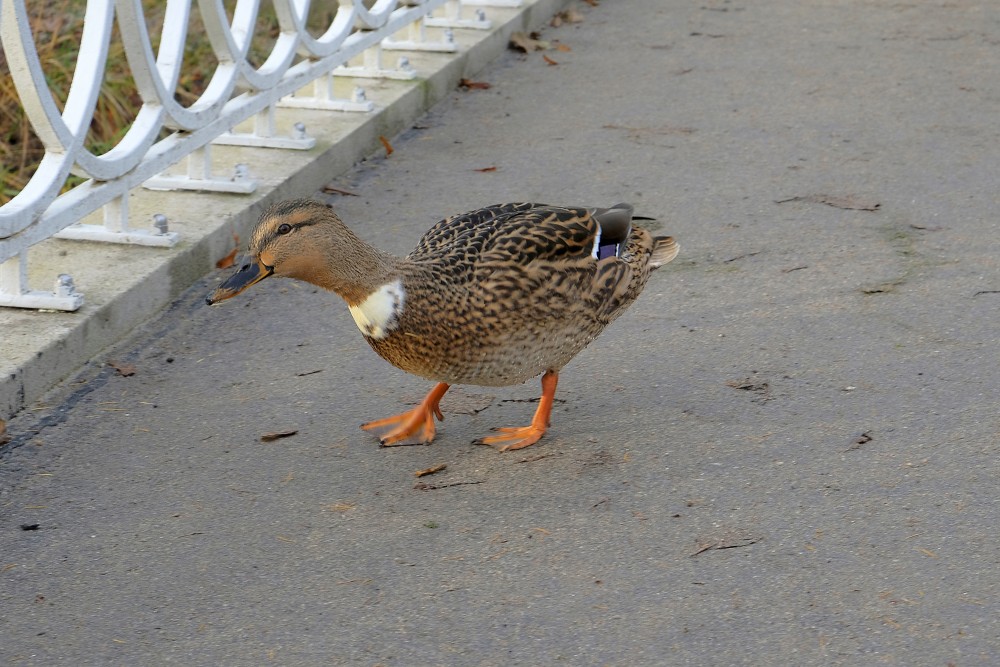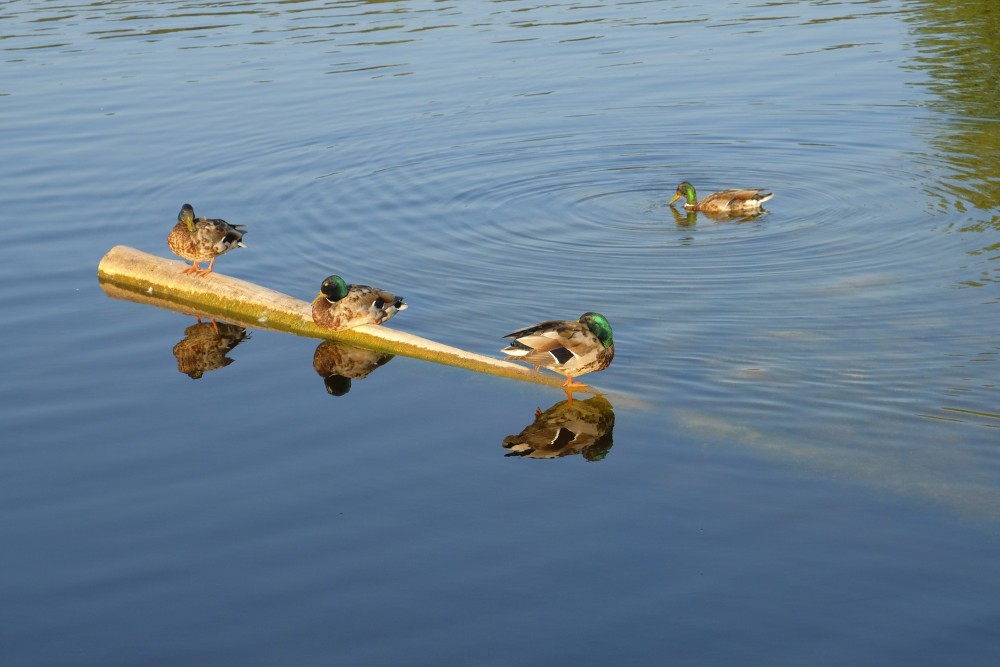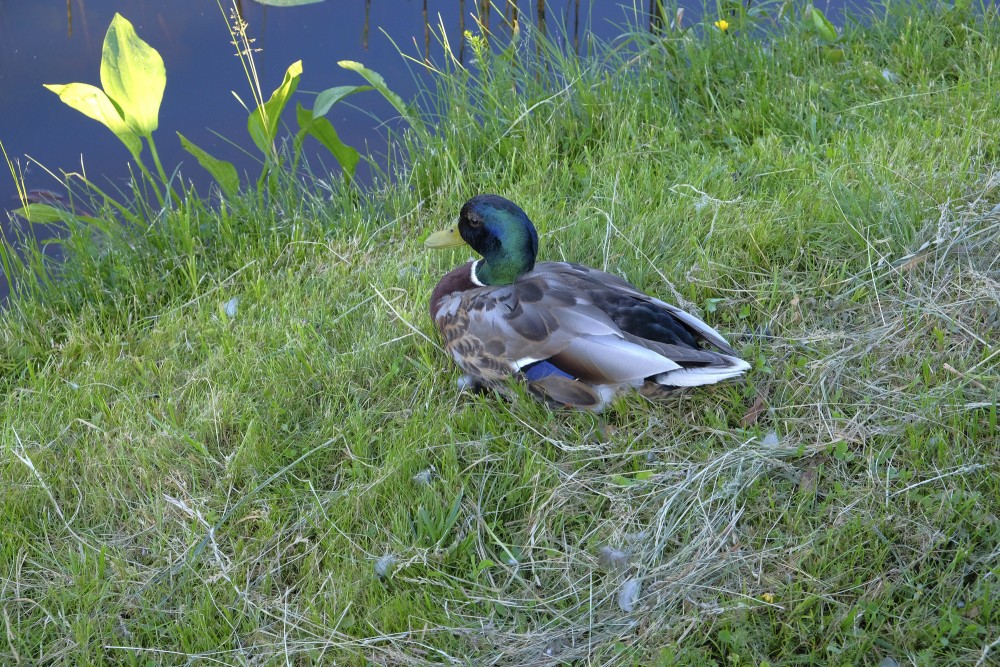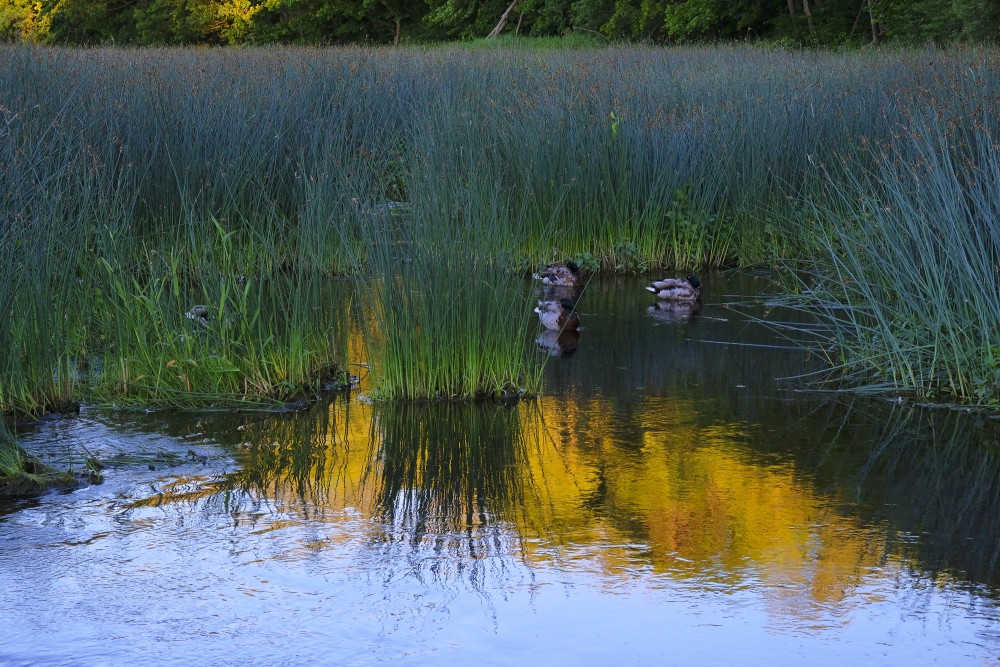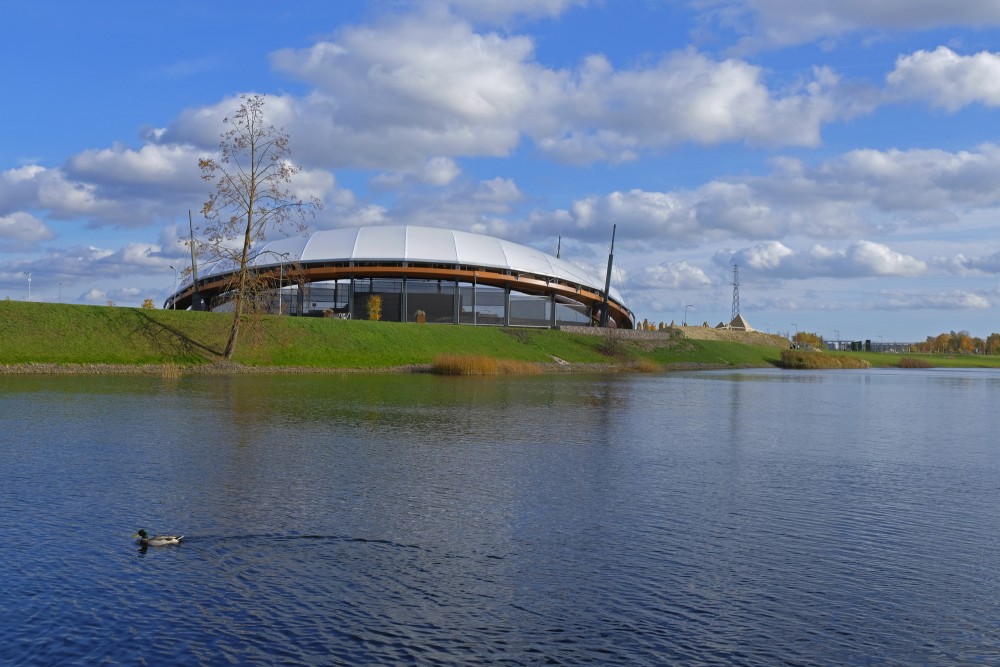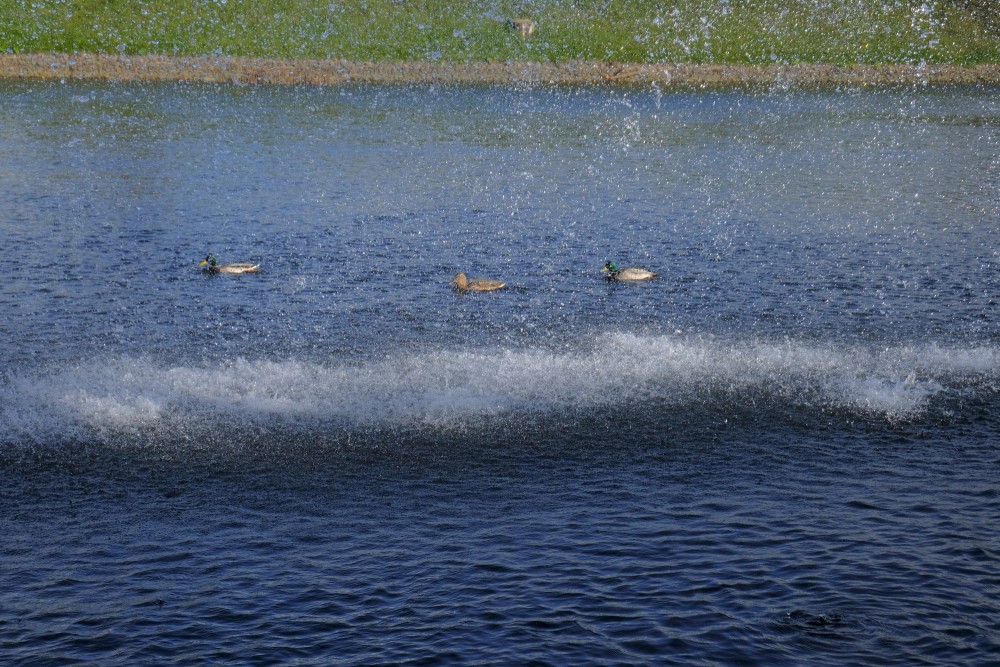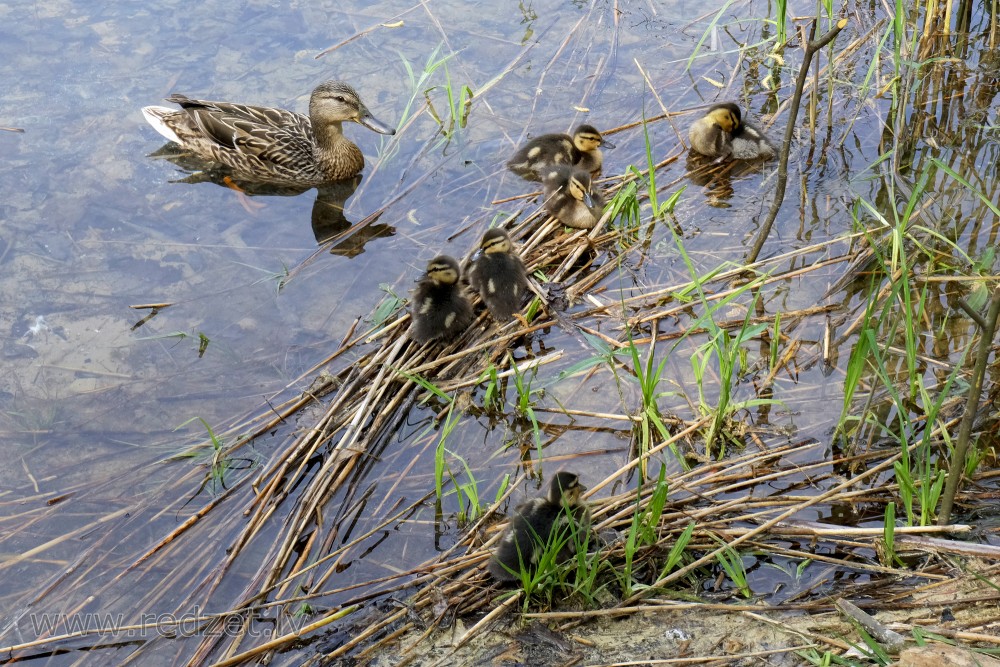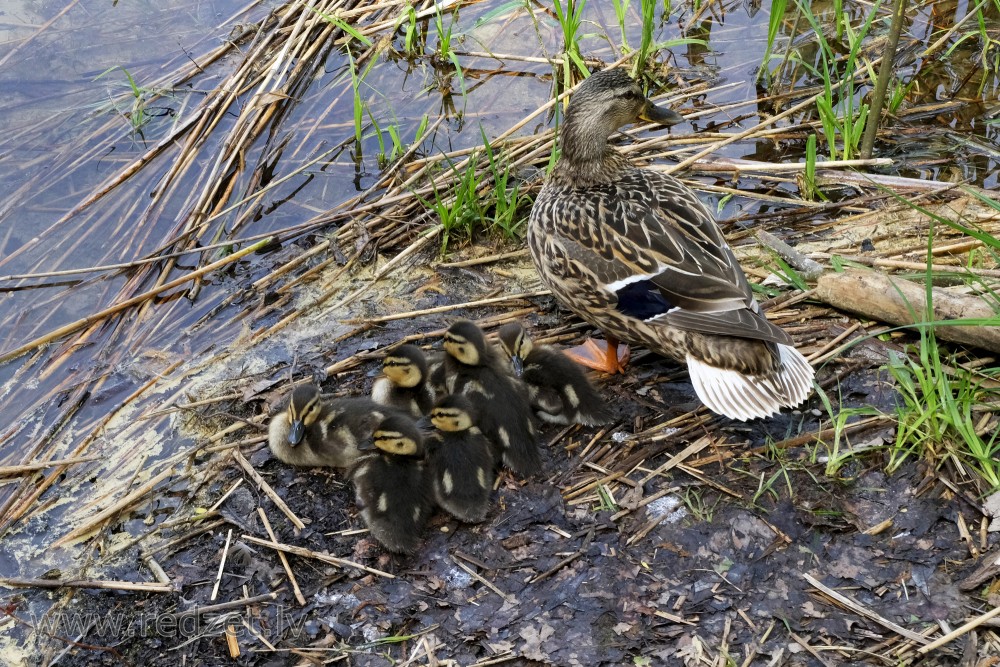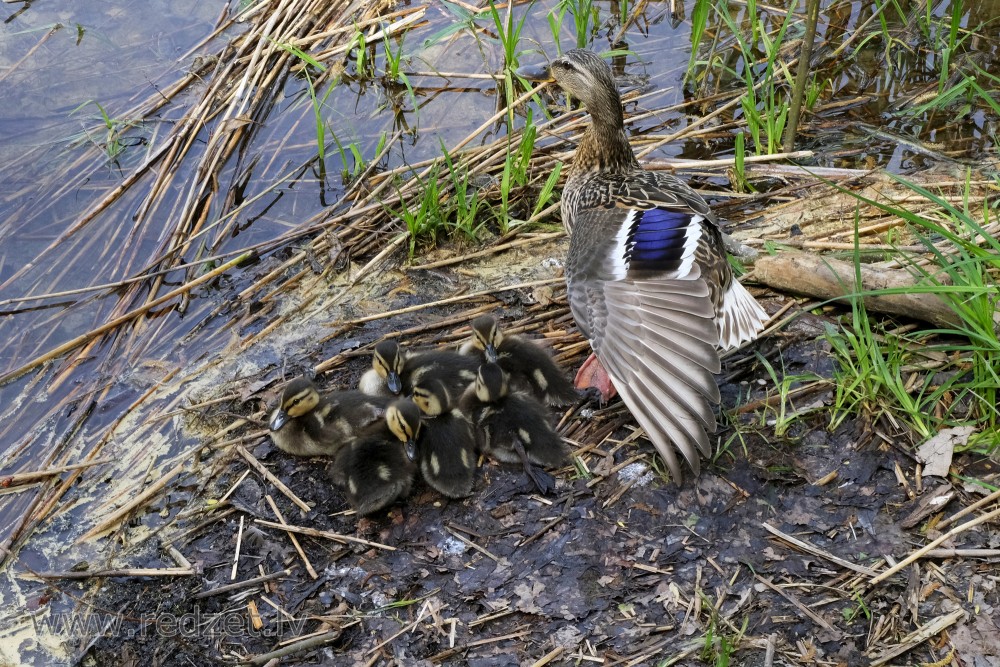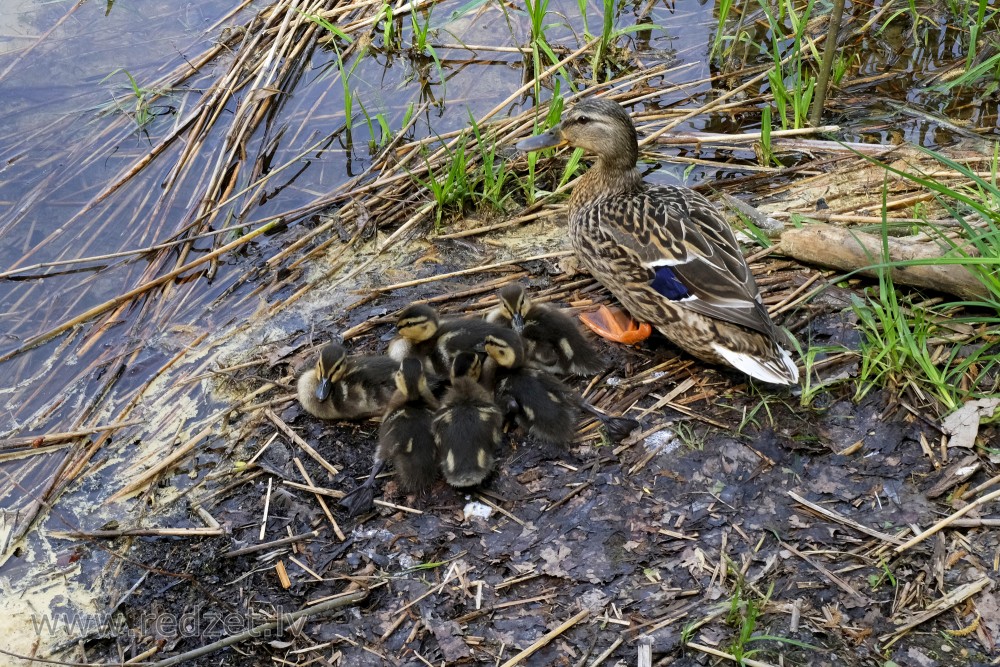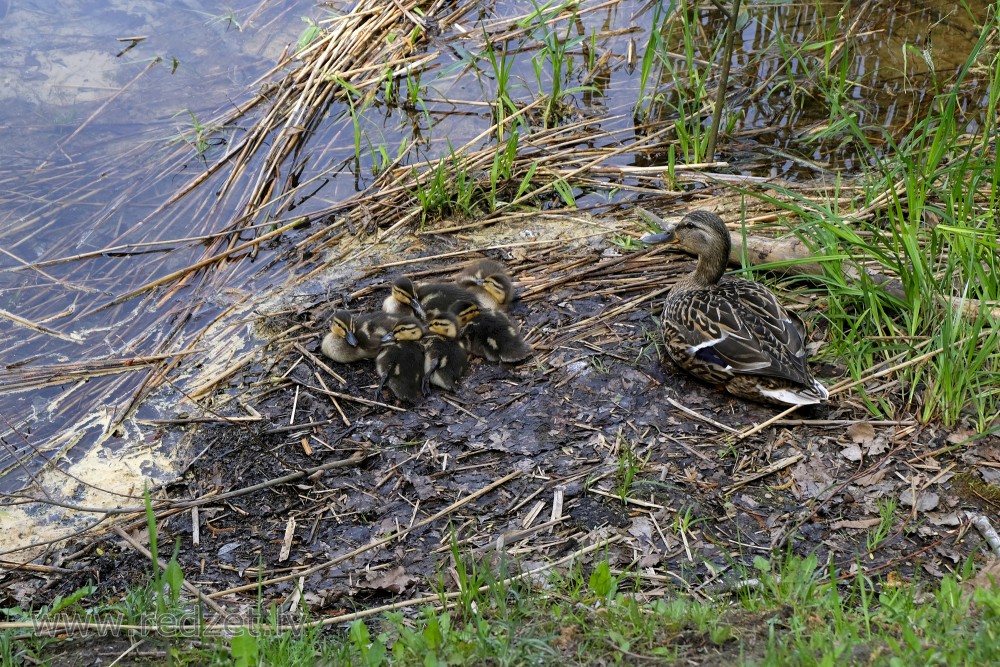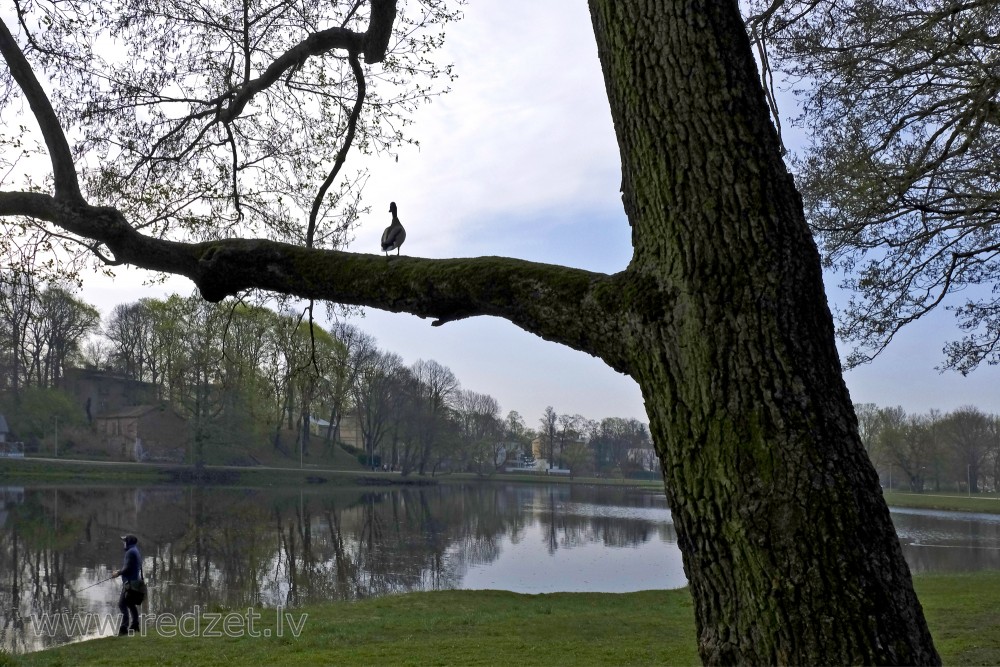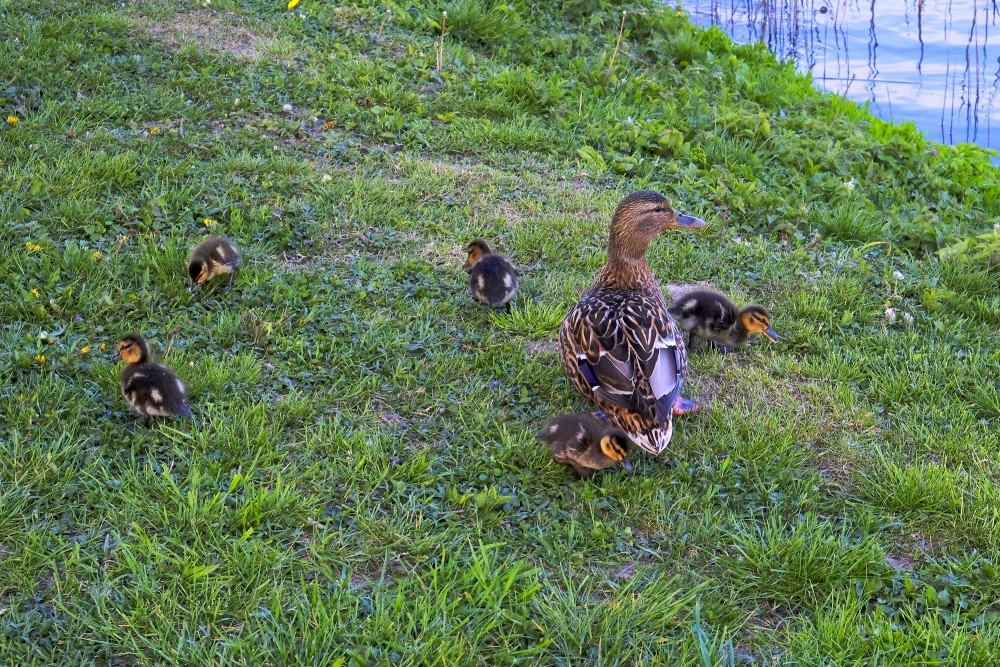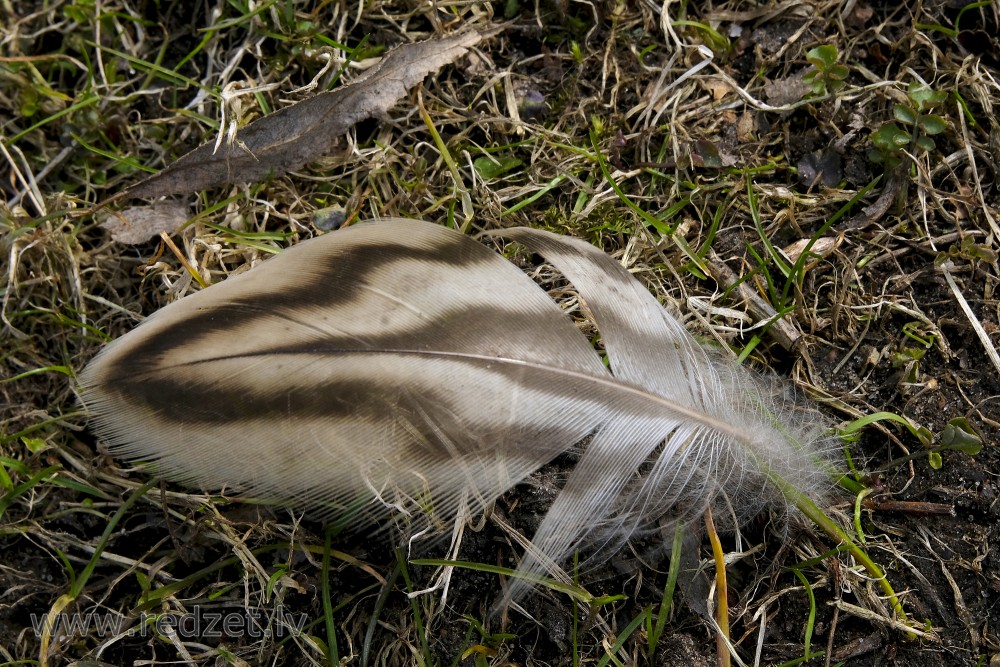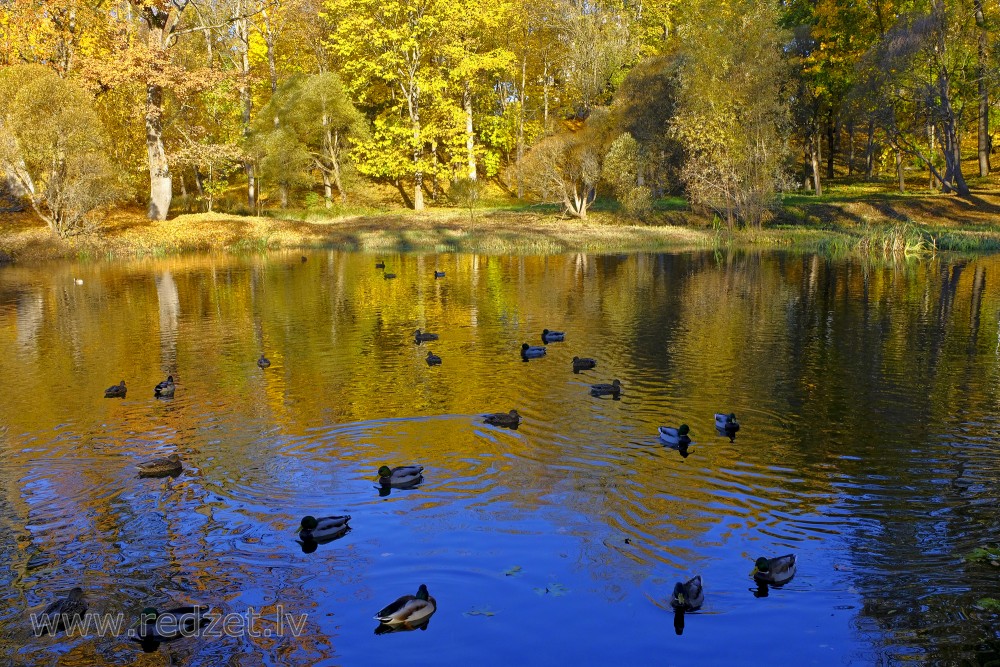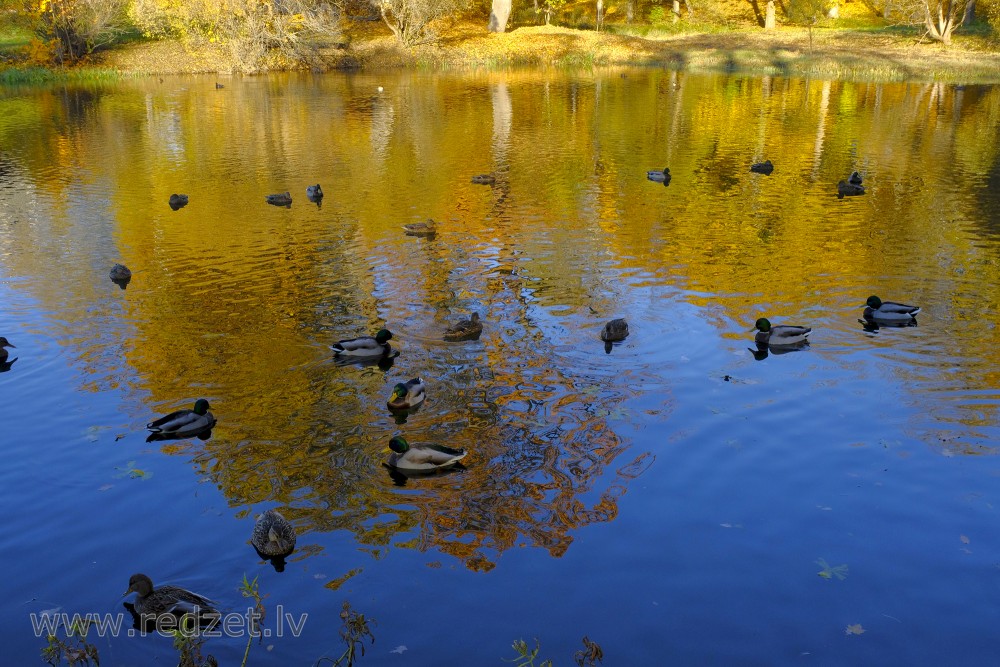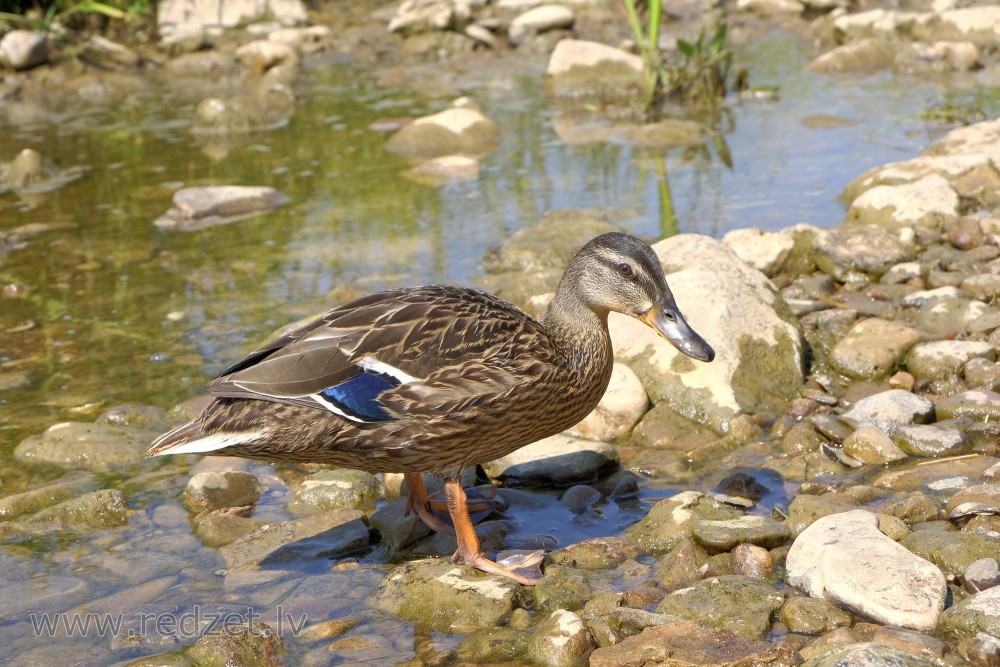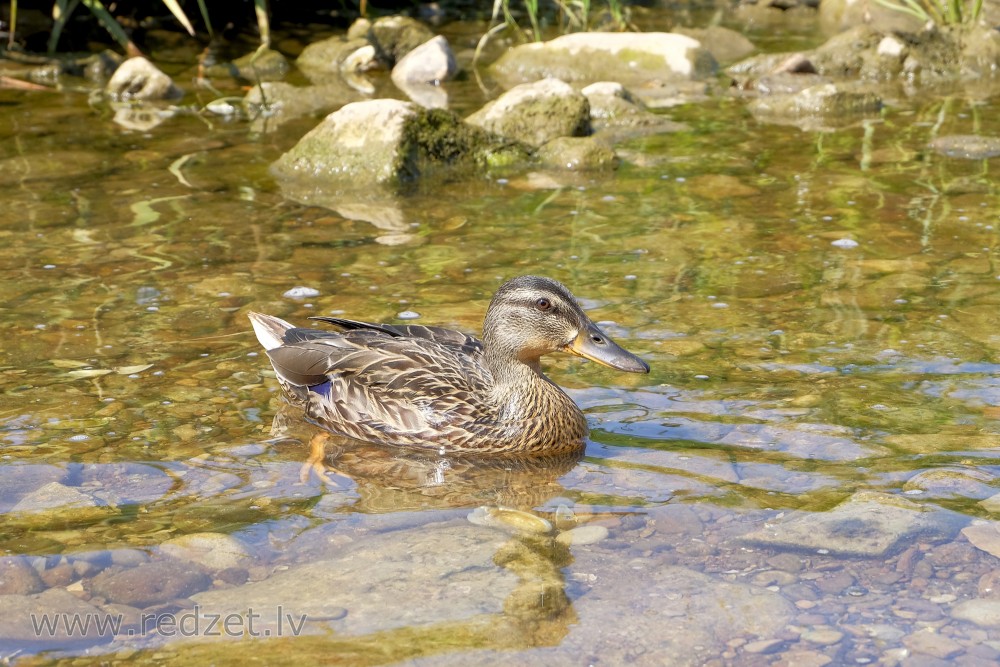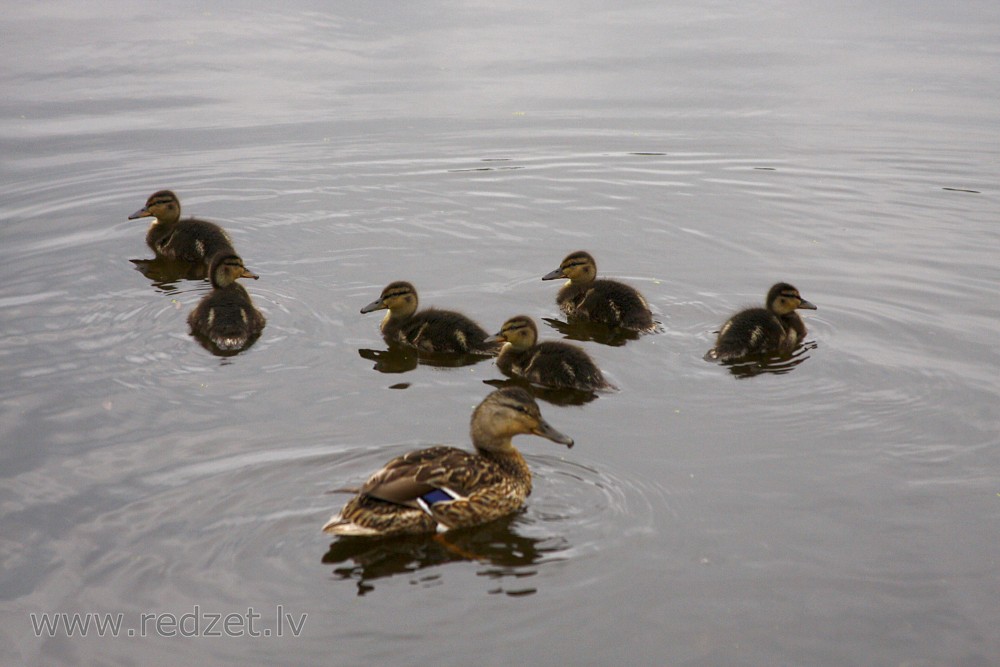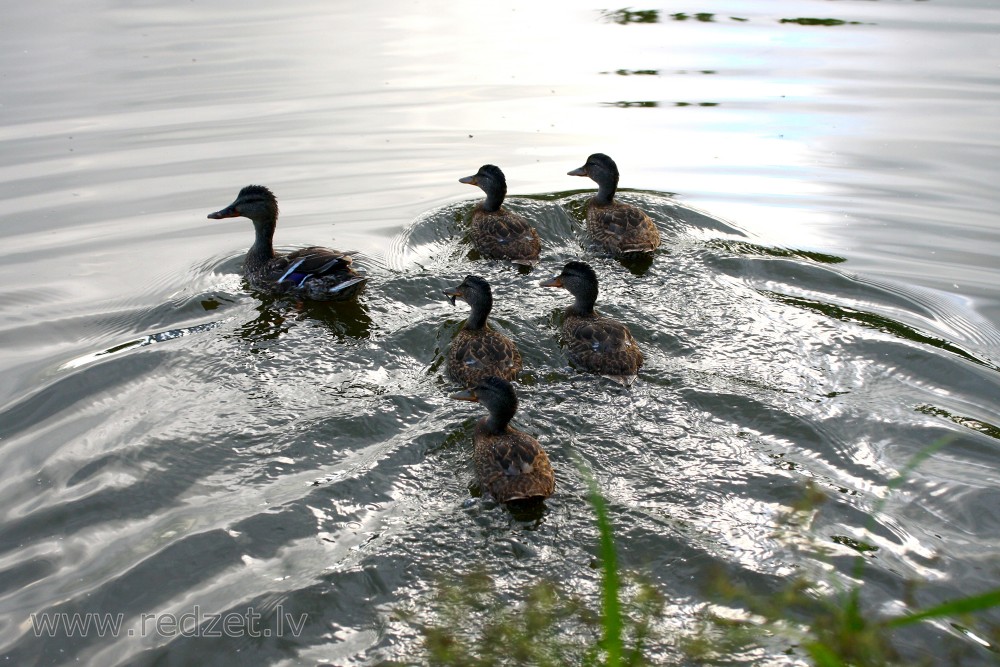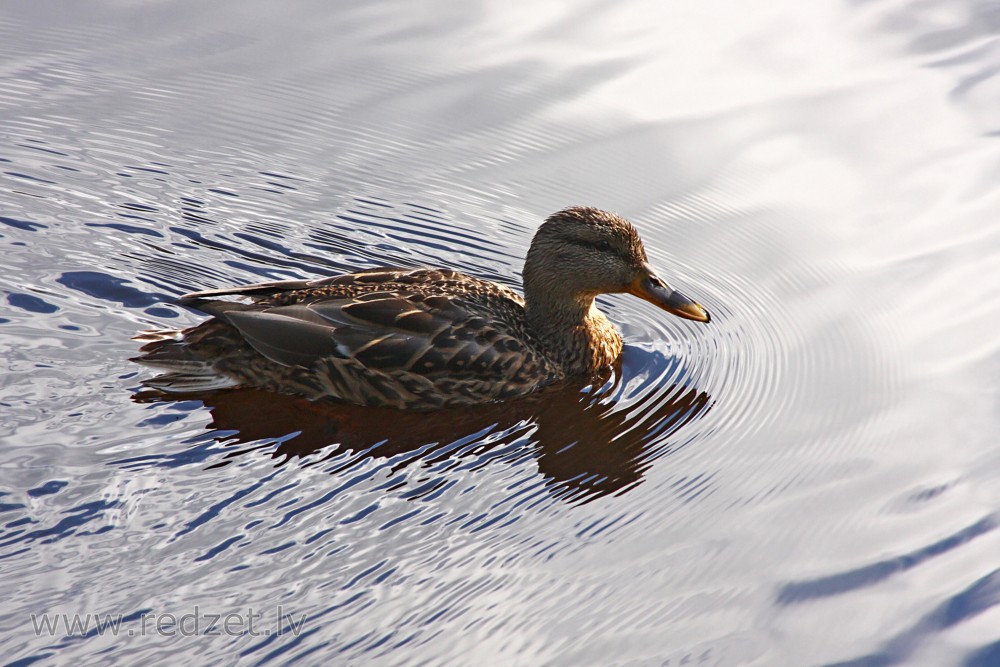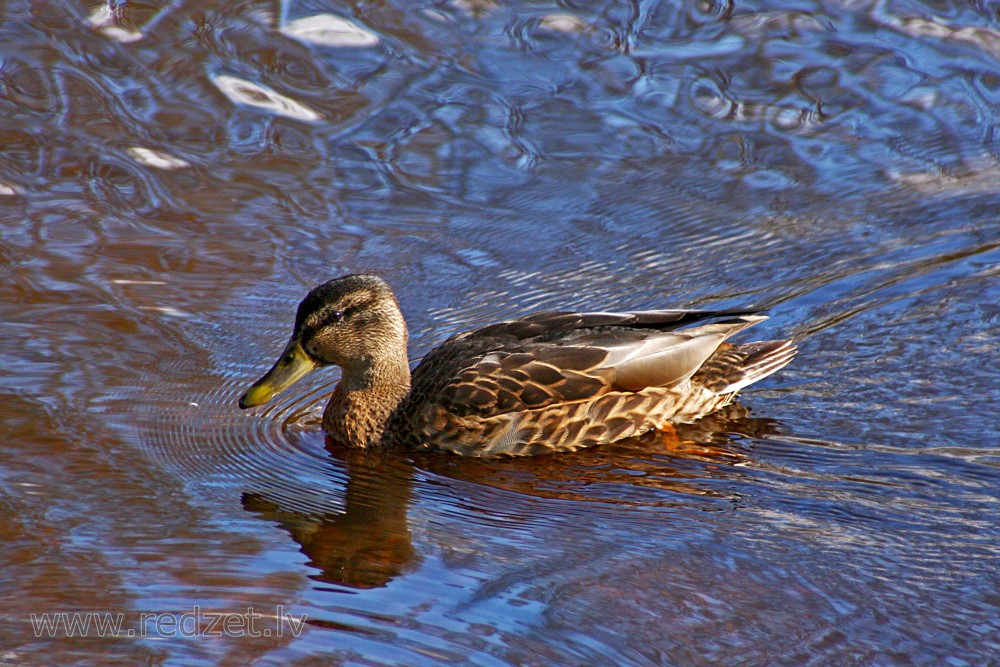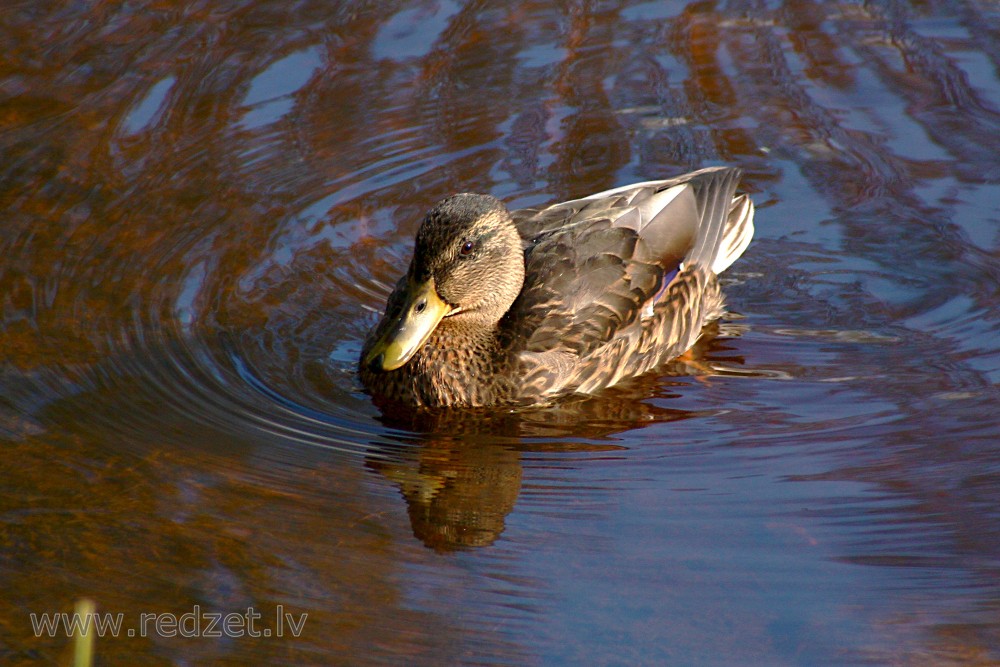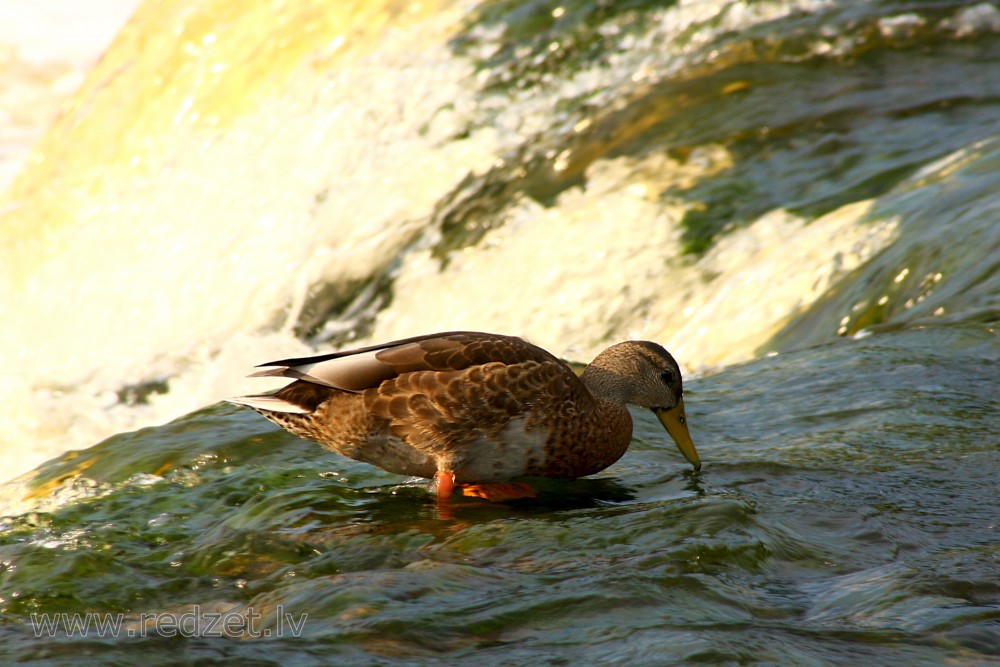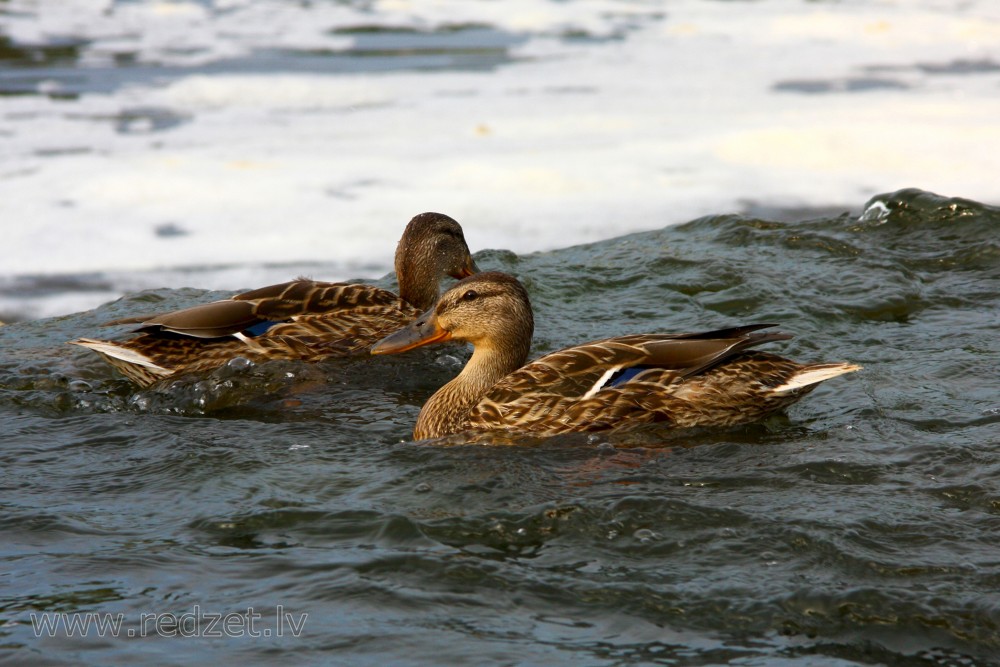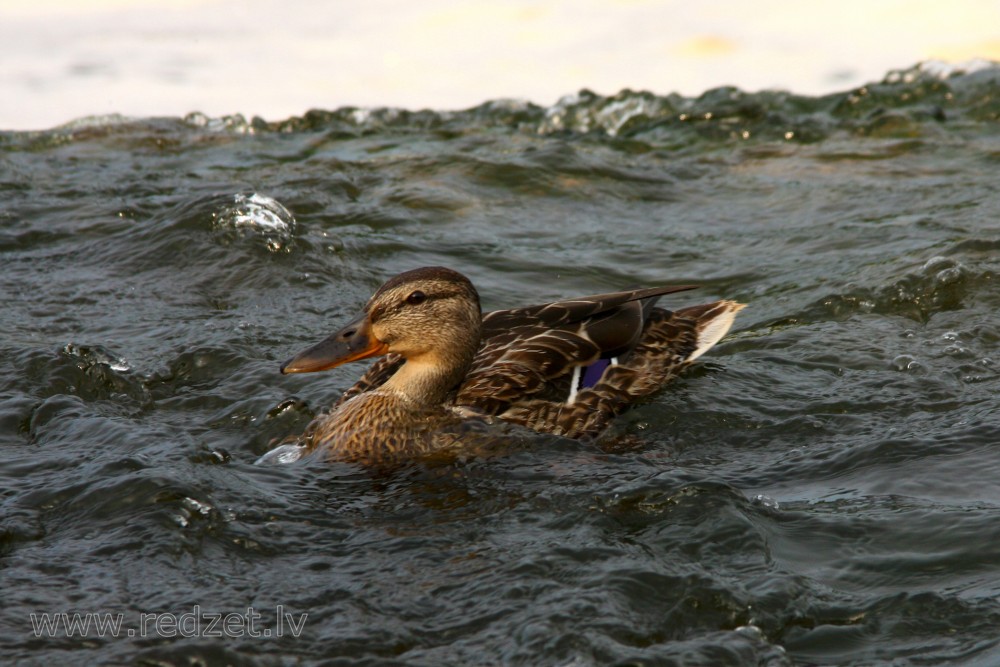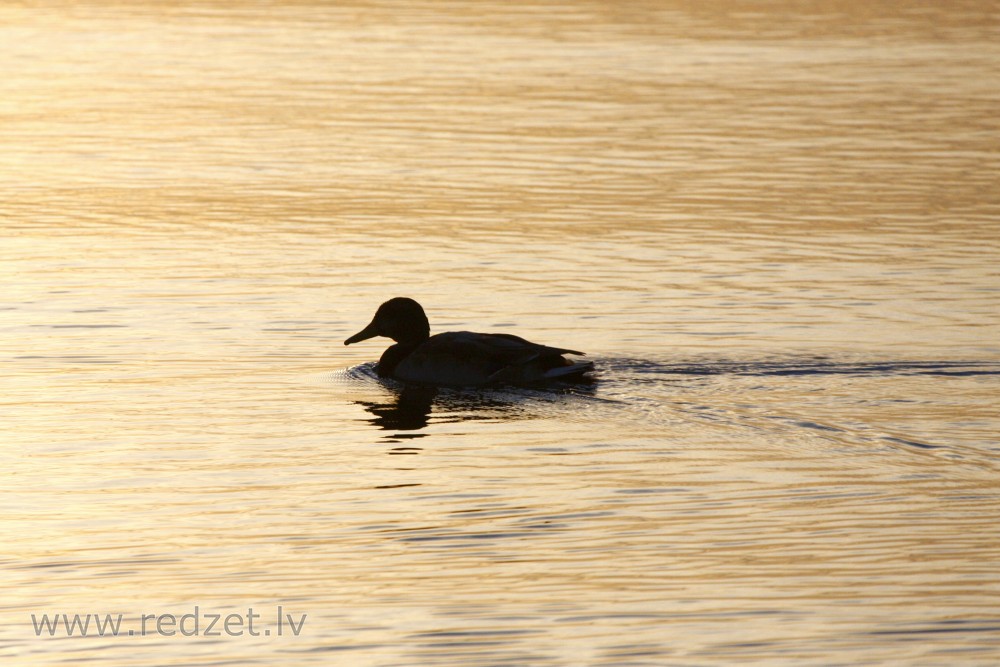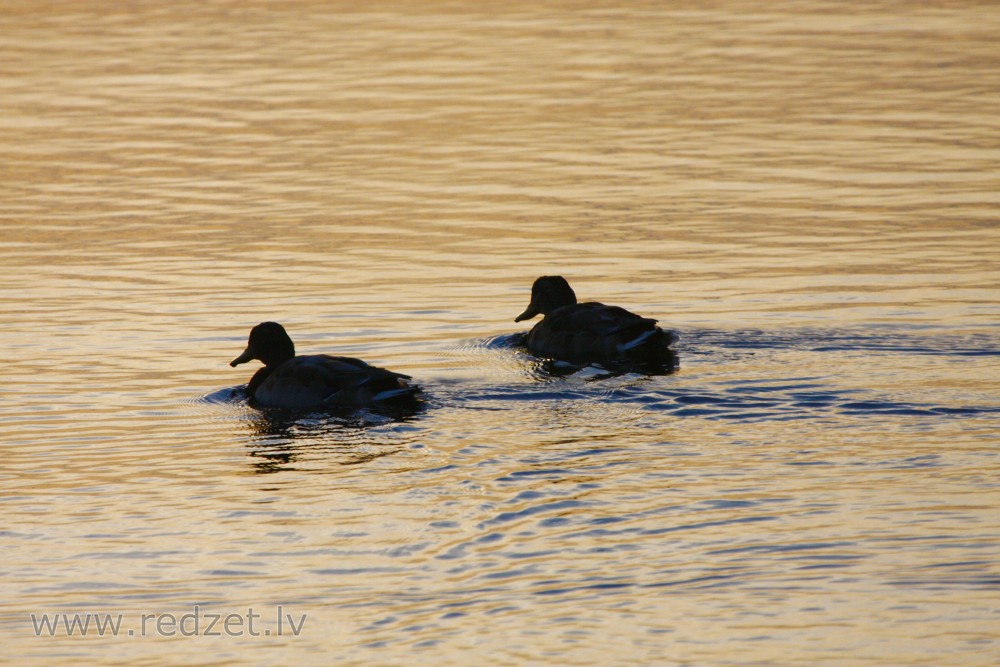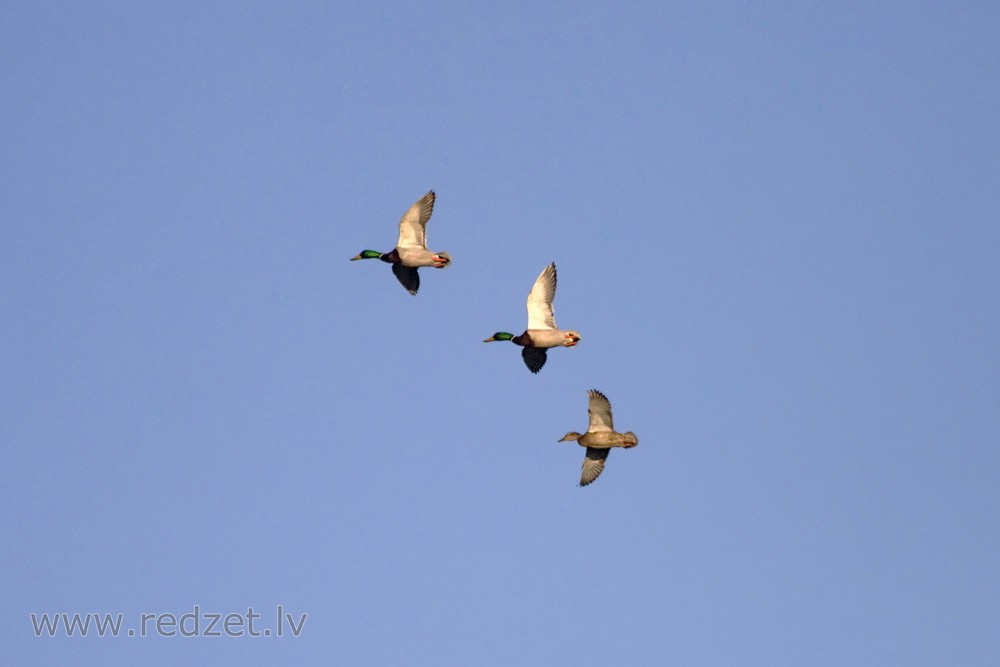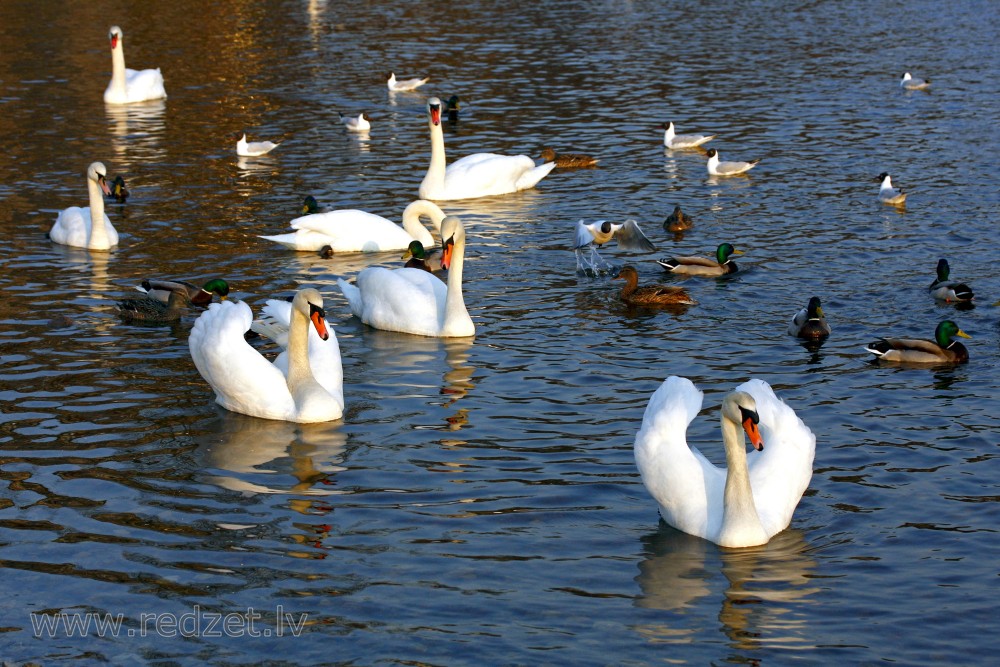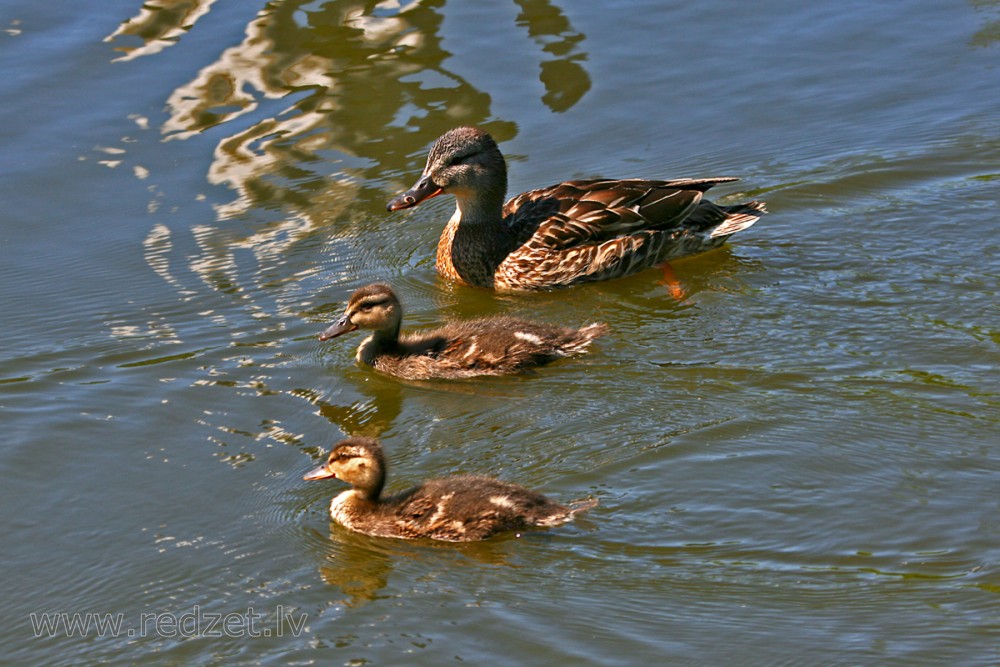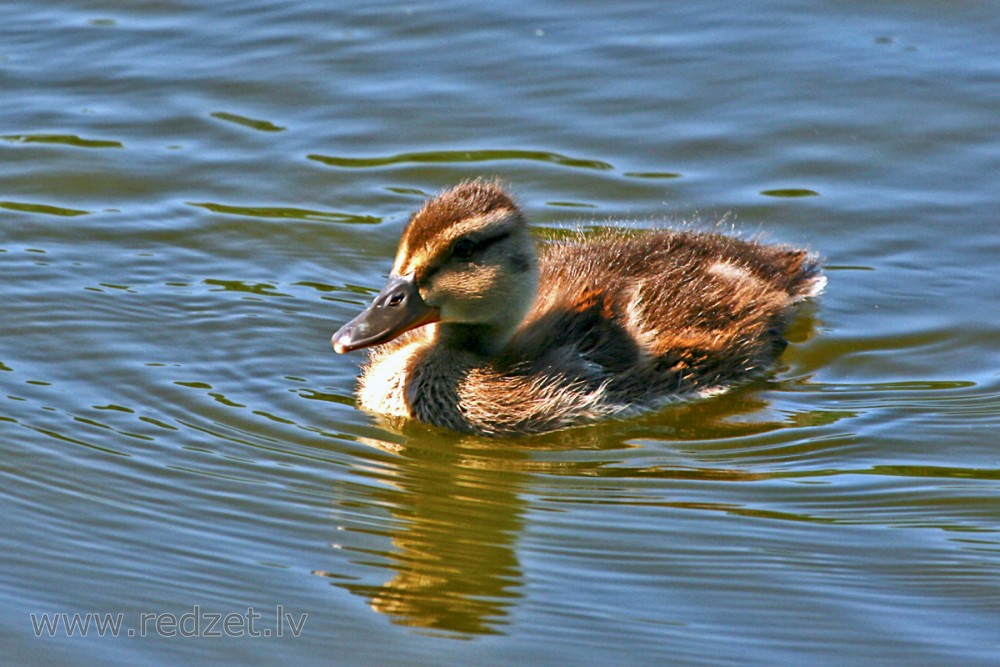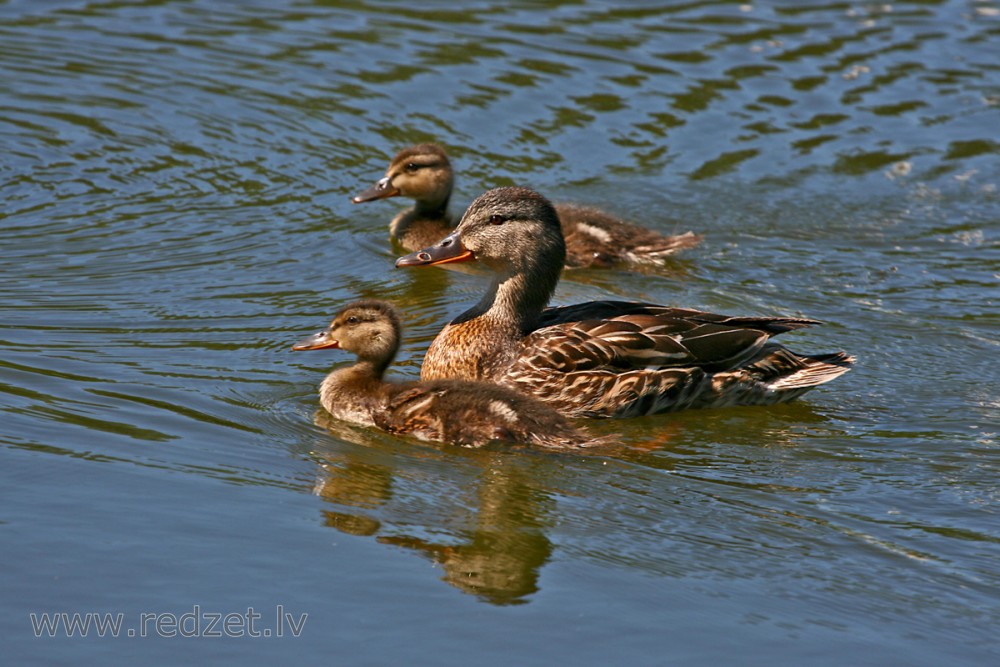Mallard (Anas platyrhynchos)
The mallard (Anas platyrhynchos) is a dabbling duck that breeds throughout the temperate and subtropical Americas, Eurasia, and North Africa and has been introduced to New Zealand, Australia, Peru, Brazil, Uruguay, Argentina, Chile, Colombia, the Falkland Islands, and South Africa. This duck belongs to the subfamily Anatinae of the waterfowl family Anatidae. The male birds (drakes) have a glossy green head and are grey on wings and belly while the females (hens or ducks) have mainly brown-speckled plumage. Both sexes have an area of white-bordered black or iridescent blue feathers called a speculum on their wings; males especially tend to have blue speculum feathers. The mallard is 50–65 cm (20–26 in) long, of which the body makes up around two-thirds the length. The wingspan is 81–98 cm (32–39 in) and the bill is 4.4 to 6.1 cm (1.7 to 2.4 in) long. It is often slightly heavier than most other dabbling ducks, weighing 0.72–1.58 kg (1.6–3.5 lb). Mallards live in wetlands, eat water plants and small animals, and are social animals preferring to congregate in groups or flocks of varying sizes. This species is the main ancestor of most breeds of domesticated ducks.
The female lays eight to thirteen creamy white to greenish-buff spotless eggs, on alternate days. Incubation takes 27 to 28 days and fledging takes 50 to 60 days. The ducklings are precocial and fully capable of swimming as soon as they hatch.
The mallard is considered to be a species of least concern by the International Union for Conservation of Nature (IUCN). Unlike many waterfowl, mallards are considered an invasive species in some regions. It is a very adaptable species, being able to live and even thrive in urban areas which may have supported more localised, sensitive species of waterfowl before development. The non-migratory mallard interbreeds with indigenous wild ducks of closely related species through genetic pollution by producing fertile offspring. Complete hybridisation of various species of wild duck gene pools could result in the extinction of many indigenous waterfowl. The wild mallard is the ancestor of most domestic ducks, and its naturally evolved wild gene pool gets genetically polluted by the domesticated and feral mallard populations.
Description
The mallard is a medium-sized waterfowl species that is often slightly heavier than most other dabbling ducks. It is 50–65 cm (20–26 in) long – of which the body makes up around two-thirds – has a wingspan of 81–98 cm (32–39 in), and weighs 0.72–1.58 kg (1.6–3.5 lb). Among standard measurements, the wing chord is 25.7 to 30.6 cm (10.1 to 12.0 in), the bill is 4.4 to 6.1 cm (1.7 to 2.4 in), and the tarsus is 4.1 to 4.8 cm (1.6 to 1.9 in).
The breeding male mallard is unmistakable, with a glossy bottle-green head and a white collar that demarcates the head from the purple-tinged brown breast, grey-brown wings, and a pale grey belly. The rear of the male is black, with white-bordered dark tail feathers. The bill of the male is a yellowish-orange tipped with black, with that of the female generally darker and ranging from black to mottled orange and brown. The female mallard is predominantly mottled, with each individual feather showing sharp contrast from buff to very dark brown, a coloration shared by most female dabbling ducks, and has buff cheeks, eyebrow, throat, and neck, with a darker crown and eye-stripe.
Both male and female mallards have distinct iridescent purple-blue speculum feathers edged with white, which are prominent in flight or at rest but temporarily shed during the annual summer moult. Upon hatching, the plumage of the duckling is yellow on the underside and face (with streaks by the eyes) and black on the back (with some yellow spots) all the way to the top and back of the head. Its legs and bill are also black. As it nears a month in age, the duckling's plumage starts becoming drab, looking more like the female, though more streaked, and its legs lose their dark grey colouring. Two months after hatching, the fledgling period has ended, and the duckling is now a juvenile. Between three and four months of age, the juvenile can finally begin flying, as its wings are fully developed for flight (which can be confirmed by the sight of purple speculum feathers). Its bill soon loses its dark grey colouring, and its sex can finally be distinguished visually by three factors: 1) the bill is yellow in males, but black and orange in females; 2) the breast feathers are reddish-brown in males, but brown in females; and 3) in males, the centre tail feather (drake feather) is curled, but in females, the centre tail feather is straight. During the final period of maturity leading up to adulthood (6–10 months of age), the plumage of female juveniles remains the same while the plumage of male juveniles gradually changes to its characteristic colours. This change in plumage also applies to adult mallard males when they transition in and out of their non-breeding eclipse plumage at the beginning and the end of the summer moulting period. The adulthood age for mallards is fourteen months, and the average life expectancy is three years, but they can live to twenty.
Several species of duck have brown-plumaged females that can be confused with the female mallard. The female gadwall (A. strepera) has an orange-lined bill, white belly, black and white speculum that is seen as a white square on the wings in flight, and is a smaller bird. More similar to the female mallard in North America are the American black duck (A. rubripes), which is notably darker-hued in both sexes than the mallard, and the mottled duck (A. fulvigula), which is somewhat darker than the female mallard, and with slightly different bare-part colouration and no white edge on the speculum.
In captivity, domestic ducks come in wild-type plumages, white, and other colours. Most of these colour variants are also known in domestic mallards not bred as livestock, but kept as pets, aviary birds, etc., where they are rare but increasing in availability.
A noisy species, the female has the deep quack stereotypically associated with ducks. Male mallards make a sound phonetically similar to that of the female, a typical quack, but it is a deep and raspy and can also sound like breeeeze. When incubating a nest, or when offspring are present, females vocalise differently, making a call that sounds like a truncated version of the usual quack. They hiss if the nest or offspring are threatened or interfered with. When taking off, the wings of a mallard produce a characteristic faint whistling noise.
The mallard is a rare example of both Allen's Rule and Bergmann's Rule in birds. Bergmann's Rule, which states that polar forms tend to be larger than related ones from warmer climates, has numerous examples in birds, as in case of the Greenland mallard which is larger than the mallards further south. Allen's Rule says that appendages like ears tend to be smaller in polar forms to minimise heat loss, and larger in tropical and desert equivalents to facilitate heat diffusion, and that the polar taxa are stockier overall. Examples of this rule in birds are rare as they lack external ears, but the bill of ducks is supplied with a few blood vessels to prevent heat loss, and, as in the Greenland mallard, the bill is smaller than that of birds farther south, illustrating the rule.
Due to the variability of the mallard's genetic code, which gives it its vast interbreeding capability, mutations in the genes that decide plumage colour are very common and have resulted in a wide variety of hybrids such as Brewer's duck (mallard × gadwall, Anas strepera).
en.wikipedia.org
https://en.wikipedia.org/wiki/Mallard
Continue reading